Balancing Atomic Chess takes nuance – Nick Long
Atomar Chess uses the same equipment and rules as orthodox Western Chess does – a 8×8 chessboard with the same chessmen that move in the same way. All the rules from “normal chess” continue to exist unless modified by an atomar-specific rule. That is, the following rules still exist:
- Draw by three-fold repetition of position
- Pawns can promote, and promote to any non-pawn, non-King piece
- Draw by 50-move rule
- En passant captures exist*
Atomar is a slight modification of Modern Atomic Chess. There are a few subtle differences that transform Atomic Chess into a new and different game. Many new players don’t enjoy or understand a few quirks of the variant when they begin learning & playing Atomic Chess. Atomar attempts to address these issues, while balancing the variant more. The balance is accomplished by the following rule additions:
- No checks or checkmates exist. You must capture the King to win.
- The Kings have developed Royal Immunity and Diplomacy.
- A King is immune to all explosions (Immunity).
- Kings can capture pieces, and when they do so, it causes an explosion just like any other capture. They cannot capture the opposing king (Diplomacy). They can move next to each other, but cannot capture the other king.
The other rules of Atomic Chess remain the same for Atomar Chess, but KvK is always an enforced draw because the Kings cannot capture one another.
The Atomic Rule is what makes modern atomic chess different from normal chess. This rule is simply – when a capture is made, an explosion occurs that removes the capturing piece, the captured piece, all non-pawn and non-King pieces within an one-square radius of the square the capture occurred on (or a 3×3 grid centered on the explosion).

In this diagram, Black can capture the White Queen on b6 with either Qxb6 or axb6. This causes an explosion centered on the b6 square. The pieces involved in the capture disappear along with every non-pawn piece inside the 3×3 grid explosion.
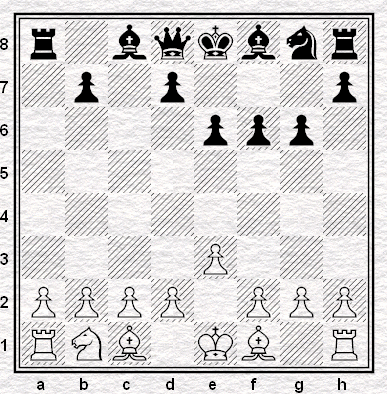
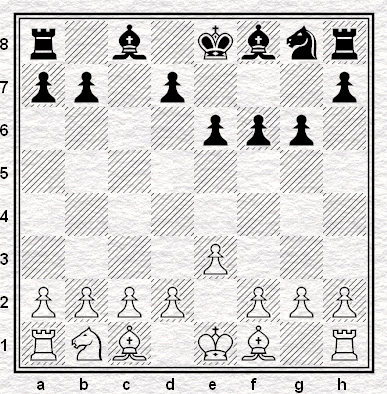
That example wasn’t any different from Atomic Chess, so the next example will involve the Kings in order to illustrate how Atomar Chess’ Royal Immunity and Diplomacy rules function:
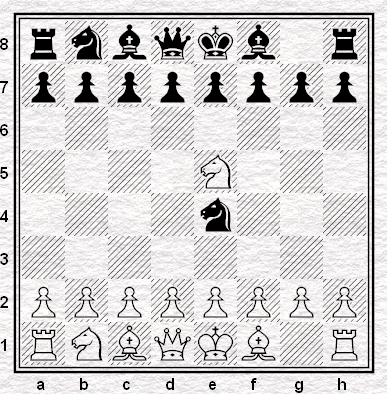
Suppose the game begins 1.Nf3 Nf6 2.Ne5 Ne4. In Atomic Chess, White wins by simply playing Nxf7 or Nxd7, exploding Black’s King. In Atomar Chess, this isn’t a win. Here’s what happens with those two moves:
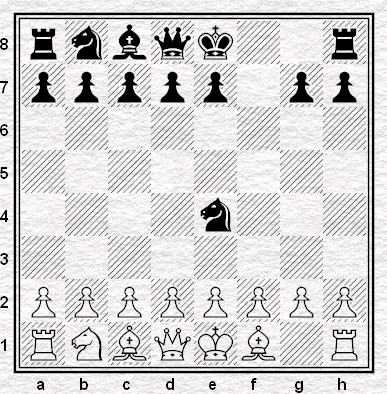
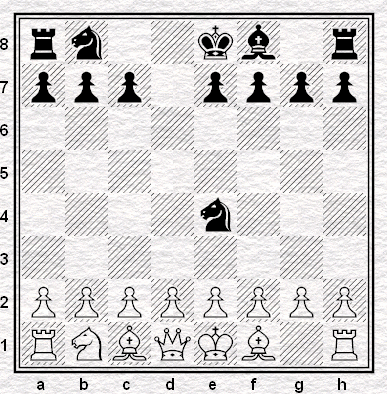
The King is immune to explosions, so the “3-move mate” no longer exists, and new players won’t fall victim to immediately losing and giving up. It also causes some interesting changes to opening theory, as 1.Nf3 no longer has to be met immediately with f6 or e5 in order to not lose immediately.
Some other useful rule clarifications are outlined below:
En passant captures cause an explosion to be centered directly behind the pawn that has just moved, because that’s where an en passant capturing pawn would end up on, as this is a special rule that allows a pawn to capture another pawn as if it had only moved one space forward, rather than two spaces forward. This often confuses new players as it seems illogical to them or they might not even understand the concept of en passant in normal orthodox Western chess. This is a special move available to pawns so that they are always able to capture an opposing pawn in some method. When a pawn tries to speed past another pawn by advancing two squares with its first move, the opposing pawn may immediately and only immediately, capture the advancing pawn as if it had only moved one square forward. This capture cannot be made on a later turn. As a result, the only rows on which en passant captures end up on are the 3rd and 6th rows of a chessboard (e.g. pawn on e5, Black moves his f-pawn two spaces forward by f5, so White can immediately play exf6 e.p., capturing the Black pawn and ending up on f6).

In the above diagram, many new players often get confused about the following sequence of moves involving an en passant capture. Black may think that he is safe after playing b5 to block the Queen’s check on his King. However, after axb6 e.p. being immediately played, they are confused as to why White’s queen is not blown up along with the pawns. That is because the center of the explosion is on b6, not b5. Their pawn does disappear because it’s being captured. Thus, the board state looks like this:

Remember, the explosion takes place behind the pawn that had just moved. This is just a momentary illusion to the new player unfamiliar with the concepts of en passant and one of a few times in which Modern Atomic Chess confuses the new player. However, en passant captures are somewhat relatively rare in most games.
The Neighboring Kings Rule allows both Kings to reside on adjacent (neighboring) squares. This is because the Kings cannot capture one another. This is a fundamental concept of atomic chess endgames, allowing some games to be drawn due to connected kings. For example:
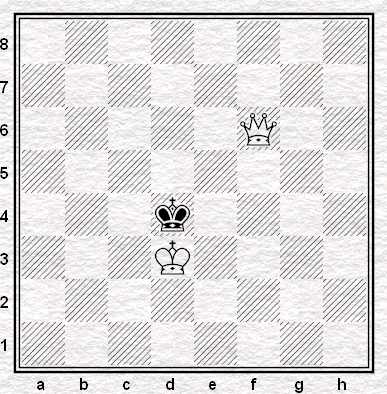
As long as Black keeps the Kings connected, White cannot win this game in Atomic Chess, but in Atomar Chess – White can win by capturing the Black King with the Queen. This is a major difference between Atomic Chess and Atomar Chess.